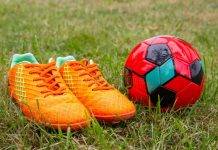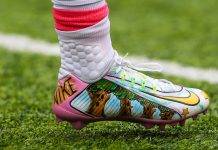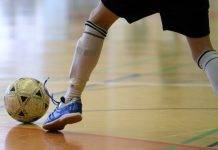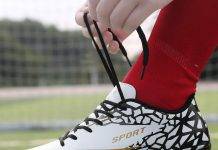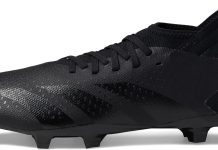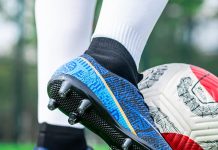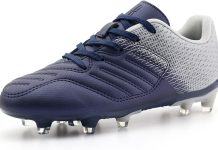When it comes to picking the perfect soccer cleats for your child, we understand the importance of finding a pair that not only fits well but also enhances their performance on the field. With so many options available, it can be overwhelming to make the right choice. That’s why we’re here to guide you through the process, giving you all the essential factors to consider when selecting soccer cleats for your little athlete. From finding the right fit to considering the playing surface, we’ve got you covered, so you can help your child kick-start their soccer journey with confidence and style. Choosing the right soccer cleats for your child can make a world of difference in their performance and overall enjoyment of the game. With so many options available on the market, it can be overwhelming to know where to start. Don’t worry, though, we’re here to help! In this comprehensive guide, we’ll take you through all the factors you need to consider to find the perfect cleats for your little soccer star.
Consider the Playing Surface
The first step in selecting soccer cleats for your child is to consider the type of playing surface they will be predominantly playing on. There are three main types to choose from: grass fields, artificial turf, and indoor courts.
Review contents
Grass Fields
If your child primarily plays on natural grass fields, it’s best to opt for cleats with a combination of molded and removable studs. Molded studs provide stability and traction, while removable studs allow for customization based on field conditions.
Artificial Turf
For artificial turf surfaces, cleats with shorter, rubber or plastic studs are recommended. These studs provide excellent grip without causing damage to the turf.
Indoor Courts
Indoor soccer courts often have a specific type of surface made of rubber or hardwood. In these cases, it’s important to choose indoor soccer shoes designed for this type of surface. These shoes typically have a non-marking rubber sole that provides excellent grip and prevents damage to the court.
Assess your Child’s Playing Style
Understanding your child’s playing style is crucial in selecting the right cleats that cater to their specific needs. Consider the following factors:
Position
The position your child plays can greatly impact the type of cleats they require. For example, forwards may benefit from cleats that offer more traction and speed, while defenders might prioritize durability and ankle support.
Agility
If your child possesses exceptional agility and quick footwork, look for cleats that provide maximum flexibility and allow for quick changes in direction.
Power
For players who rely on the strength of their shots and passes, cleats with a sturdy and supportive build can help them generate more power.
Speed
Speed demons on the field will benefit from cleats that are lightweight and offer excellent grip to help them sprint faster.
Ball Control
Players who excel in ball control should look for cleats with a snug fit and a smooth upper that allows for excellent touch and feel on the ball.
Determine the Cleat Material
Once you’ve assessed your child’s playing style, it’s time to dive into the different cleat materials available. The three main options are leather, synthetic, and mesh.
Leather
Leather cleats are known for their superior comfort, excellent touch on the ball, and durability. They mold to the shape of the foot over time, providing a glove-like fit.
Synthetic
Synthetic cleats are often more affordable and lightweight compared to leather options. They are also more resistant to water, making them a practical choice for wet playing conditions.
Mesh
Mesh cleats offer exceptional breathability and are ideal for hot and humid climates. They are lightweight and provide a comfortable fit, but may not offer the same level of durability as leather or synthetic options.
Hybrid
Some cleats combine different materials to offer the benefits of multiple types. Hybrid cleats can provide a balance between durability, comfort, and performance.
Consider the Fit and Size
Getting the right fit and size of soccer cleats is crucial to ensure your child’s comfort and prevent any potential injuries. Follow these steps to find their perfect fit:
Measure your Child’s Feet
Using a measuring tape, measure the length and width of your child’s feet. Keep in mind that soccer cleats often fit more snugly than regular shoes, so it’s important to refer to the manufacturer’s size chart for accurate measurements.
Toe Box
Ensure that there is enough room in the toe box for your child’s toes to move comfortably. A snug fit is important, but tightness around the toes can be uncomfortable and restrict movement.
Sock-Like Fit
Many modern soccer cleats offer a “sock-like” fit, where the upper extends higher up the ankle. This can provide a secure and supportive feel, but make sure it’s not too tight or restrictive.
Ankle Support
Consider the level of ankle support your child needs based on their playing style and any previous ankle injuries. Cleats with higher collars or extra ankle padding can provide additional stability.
Break-In Period
Keep in mind that leather cleats may require a break-in period to mold to your child’s feet. Synthetic and mesh cleats, on the other hand, usually offer a more comfortable fit right out of the box.
Cleat Design and Firmness
Soccer cleats come in various designs and firmness options to suit different playing conditions. Understanding these options will help you make an informed decision:
Firm Ground (FG)
Firm ground cleats are the most common and versatile type. They feature molded studs that provide excellent traction on natural grass surfaces.
Soft Ground (SG)
For wet or muddy conditions, soft ground cleats with longer, removable studs can provide superior grip and prevent slippage.
Hard Ground (HG)
If your child often plays on dry, hard, or artificial surfaces, hard ground cleats with shorter, rubber or plastic studs are a suitable choice.
Indoor (IN)
Indoor soccer shoes have non-marking rubber soles, designed specifically for indoor court surfaces. They offer great traction and prevent damage to the court.
Turf (TF)
Turf cleats are designed for artificial turf surfaces and have shorter, rubber or plastic studs that provide optimal grip without damaging the turf.
Evaluate the Cleat Weight
The weight of soccer cleats can significantly impact your child’s performance on the field. Consider the following options:
Lightweight Cleats
Lightweight cleats prioritize speed and agility by reducing the overall weight of the shoe. They allow for quick movements and are ideal for players who rely on their speed.
Midweight Cleats
Midweight cleats strike a balance between durability and speed. They offer a bit more protection and are suitable for players who require a sturdy build.
Heavyweight Cleats
Heavyweight cleats provide maximum protection and support. They are often preferred by defenders or players who prioritize stability over speed.
Consider the Price Range
Soccer cleats come in a wide range of prices, so consider your budget before making a decision. Here are the three main price categories to choose from:
Budget-Friendly Options
Budget-friendly options offer decent quality without breaking the bank. These cleats can be a great choice for younger children who may outgrow them quickly.
Mid-Range Options
Mid-range options strike a balance between affordability and performance. They often offer better materials and construction for improved durability.
High-End Options
High-end cleats are designed for serious players who prioritize top-quality materials, advanced features, and cutting-edge technology. These cleats can be a significant investment, but they offer unparalleled performance.
Sole Plate and Stud Configuration
The sole plate and stud configuration of soccer cleats can impact traction, stability, and maneuverability. Here are the main types to consider:
Firm Ground (FG)
Firm ground sole plates are designed for natural grass surfaces. They typically feature a combination of molded conical and bladed studs for excellent grip and stability.
Soft Ground (SG)
Soft ground sole plates have metal or plastic detachable studs that provide superior traction on wet or muddy fields. These studs can be exchanged for different lengths based on the conditions.
Artificial Ground (AG)
Artificial ground sole plates are specifically designed for artificial turf surfaces. They often have shorter, rubber or plastic studs that offer optimal grip without causing damage to the turf.
Multi-Ground (MG)
Multi-ground sole plates are versatile options that can be used on both natural grass and artificial turf. They feature a combination of molded and detachable studs to provide traction on various surfaces.
Indoor Court (IC)
Indoor court sole plates have non-marking rubber outsoles, specifically designed for indoor soccer courts. They offer excellent grip and prevent damage to the playing surface.
Seek Professional Advice
If you’re still unsure about which cleats to choose for your child, it’s always helpful to seek guidance from professionals. Consider the following options:
Visit a Specialty Sports Store
Specialty sports stores often have knowledgeable staff who can provide personalized recommendations based on your child’s needs and playing style. They can also assist with fitting and further guidance.
Consult with Coaches or Trainers
The coaches or trainers working with your child’s team can offer valuable insights and recommendations based on their observations during practice sessions and games.
Ask Other Parents or Players
Reach out to other parents or players who have experience in selecting soccer cleats. They can share their personal recommendations and provide insights into different brands and models.
Read Online Reviews
Online reviews can be a valuable resource to gather information and read about other customers’ experiences with different cleats. They can provide you with a broader perspective before making a decision.
Consider the Brand Reputation
The reputation of a brand can indicate the quality and reliability of their soccer cleats. Keep the following factors in mind when considering brands:
Popular Soccer Brands
Well-established brands in the soccer industry often have a wide range of cleat options and are known for their quality and performance. Brands such as Nike, Adidas, Puma, and New Balance are popular choices among soccer players.
Brand Reviews
Reading reviews and feedback about specific brands can provide insights into the overall satisfaction level of customers. Look for consistent positive feedback regarding durability, comfort, and performance.
Warranty and Return Policy
Consider the warranty and return policy offered by the brand. A reliable brand will often stand behind its products and provide options for returns or exchanges in case of any issues.
Choosing the right soccer cleats for your child is a process that requires careful consideration of various factors. By considering the playing surface, your child’s playing style, cleat materials, fit and size, cleat design and firmness, cleat weight, price range, sole plate and stud configuration, professional advice, and brand reputation, you’ll be well-equipped to make an informed decision. Remember, finding the perfect cleats for your child can elevate their performance and enjoyment of the beautiful game!





